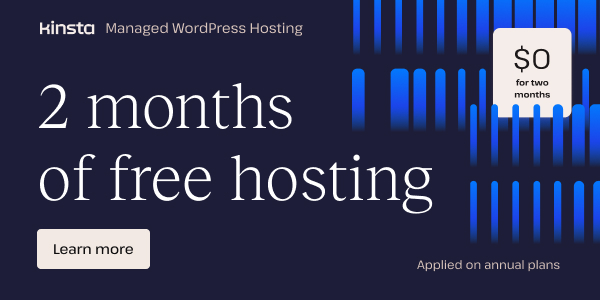
Designing a website that effectively supports virtual events is a crucial step in creating engaging online experiences. As virtual events continue to grow in popularity, ensuring that your website is user-friendly, accessible, and visually appealing is vital. In this article, we will explore key strategies for crafting a website that seamlessly integrates with your virtual events, enhancing the overall experience for attendees.
Crafting the Perfect User Experience
When planning a virtual event website, user experience (UX) should be at the forefront of your design process. Ensuring that your site is responsive, easy to navigate, and optimized for quick load times is essential. This approach not only improves engagement but also enhances conversion rates, as attendees are more likely to register if the process is smooth and straightforward.
Responsive Design
Implementing responsive design goes beyond basic mobile compatibility. Your website should adapt intelligently to different screen sizes, maintaining both functionality and visual appeal. Navigation menus should collapse cleanly on mobile devices, images should scale appropriately, and interactive elements should work intuitively across all devices. Tools like Adobe Dreamweaver can help you achieve this seamlessly.
Accessibility Guidelines
Ensure that your website complies with virtual event accessibility guidelines. This includes providing clear navigation, using accessible fonts, and offering alternative text for images. By following these guidelines, you can ensure that all attendees can engage with your event, regardless of their tech know-how. For more insights on accessibility, visit W3C Accessibility Guidelines.
Designing Engaging Content
Your content strategy should address both emotional and practical decision-making factors that influence attendance. Here are some tips to create compelling content:
Compelling Event Descriptions
Start your event description by highlighting the outcomes attendees care about most. For a business conference, focus on specific skills they’ll gain or connections they’ll make. For a cultural event, paint a picture of the unique experiences they’ll have. Back up these promises with concrete details about speakers, activities, or performances. You can use platforms like EmailOctopus to craft engaging email campaigns around these descriptions.
Speaker and Program Presentation
When presenting speakers or performers, prioritize information that matters to your audience. Their credentials matter, but their ability to solve attendees’ problems or deliver valuable experiences matters more. Include short, impactful bios that focus on relevance to your audience. Link each speaker to specific sessions or performances, helping attendees envision their event experience. For inspiration, check out Eventbrite’s speaker page examples.
Enhancing Engagement with Interactive Elements
Interactive elements are crucial for enhancing audience engagement in virtual events. Here’s how you can integrate them effectively:
Polls and Quizzes
Features like polls and quizzes can boost audience engagement and provide valuable insights. These should be integrated directly into your event rather than bolted on as an afterthought. Consider using tools like Poll Everywhere to create interactive sessions.
Live Chat and Q&A Sessions
Live chat functionality allows attendees to interact with speakers and other attendees in real-time. This can be particularly useful for Q&A sessions, where attendees can pose questions directly to speakers. Platforms like Zoom offer robust live chat features that can be integrated into your website.
Building a High-Converting Website
A well-designed website is not just visually appealing; it should also be optimized to convert visitors into registered attendees. Here are some strategies to achieve this:
Clear and Prominent CTAs
Ensure that your website has clear and prominent calls to action (CTAs). These should be visible above the fold and guide visitors through the registration process. For example, “Register Now” or “Buy Tickets” should be prominent on your homepage. You can use tools like Optimizely to A/B test different CTAs and optimize their placement.
Social Proof and Testimonials
Integrate social proof naturally throughout your content. Use testimonials from past attendees to support specific claims. Photos and videos from previous events should show genuine moments rather than staged shots. When using numbers, be specific – for instance, “93% of attendees reported making valuable business connections” carries more weight than general claims about networking. Visit Trustpilot for inspiration on integrating reviews effectively.
Choosing the Right Hosting and Tools
When designing your website, choosing the right hosting and tools is crucial. Here are some recommendations:
Web Hosting
For hosting, consider using Kinsta, which offers high-performance hosting solutions. Kinsta is known for its reliability and support, making it ideal for event websites that require consistent uptime.
Website Builders
Tools like WordPress and Wix provide easy-to-use website builders that can help you create a professional event website quickly. WordPress, in particular, offers a wide range of customizable themes and plugins, making it a popular choice for event organizers.
Event Management Software
For managing event registrations and ticketing, consider using platforms like Eventbrite or EventsAir. These platforms offer seamless integration with your website, allowing attendees to register and purchase tickets directly from your site.
Case Study: Belov Digital Agency
At Belov Digital Agency, we have successfully designed and implemented websites for various virtual events. Our approach involves a thorough understanding of the event’s goals and audience, ensuring that the website reflects the event’s brand and provides a seamless user experience. For more information on how we can help you with your virtual event website, feel free to contact us.
Conclusion
Designing a website that supports virtual events requires careful planning and execution. By focusing on user experience, engaging content, interactive elements, and high-converting design, you can create a website that not only attracts visitors but also converts them into attendees. Remember to integrate social proof, use responsive design, and choose the right hosting and tools to ensure your website is both visually appealing and functional. Whether you are an experienced event planner or just starting out, these strategies will help you create a website that enhances the overall experience of your virtual events.













